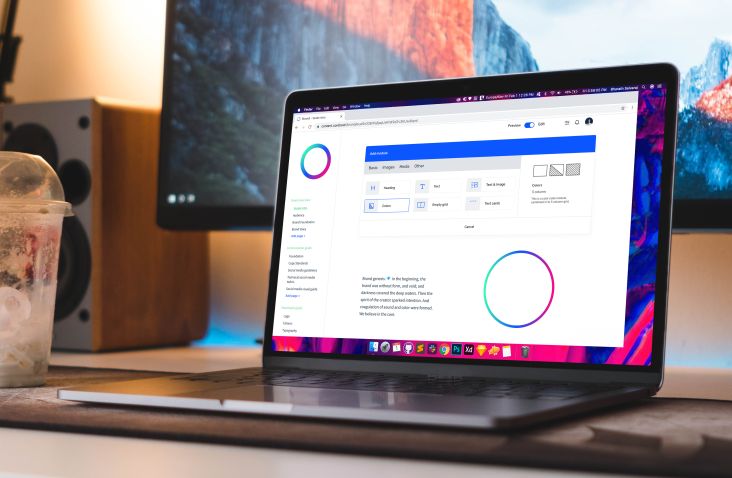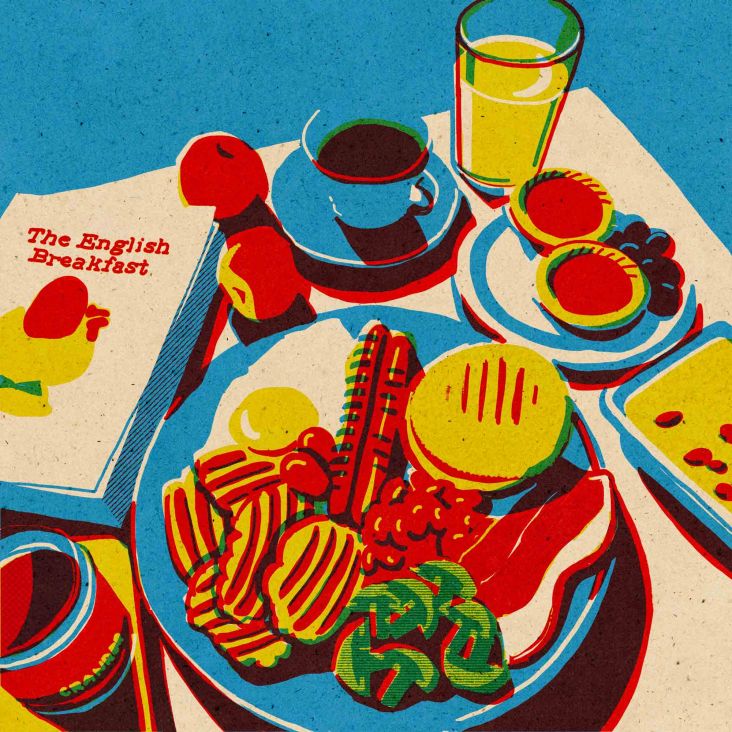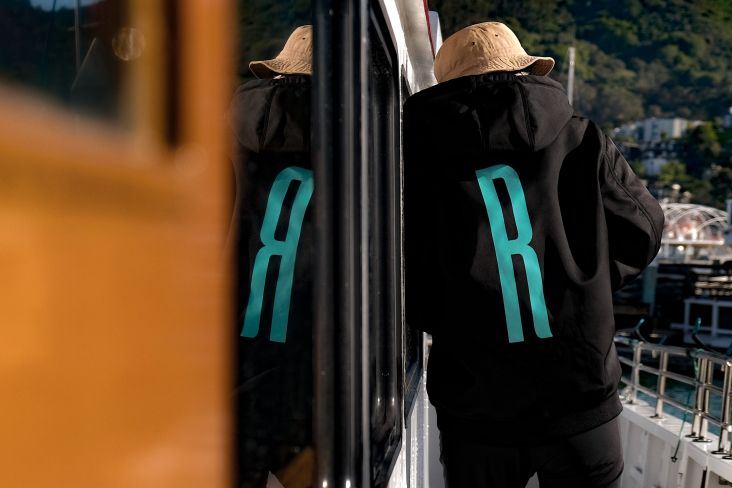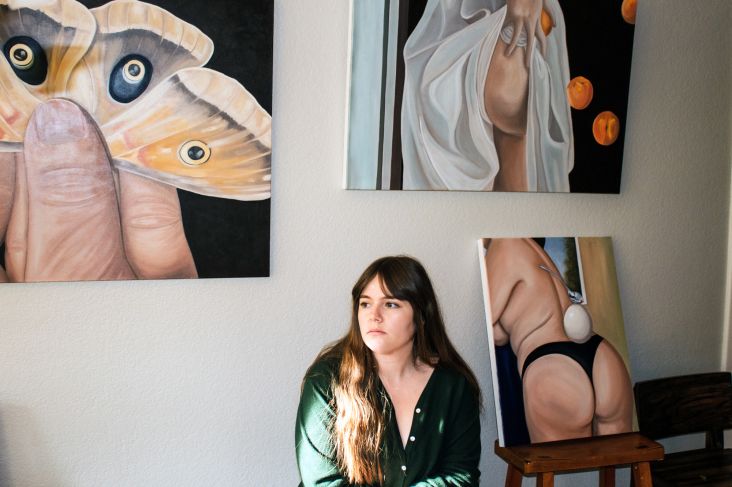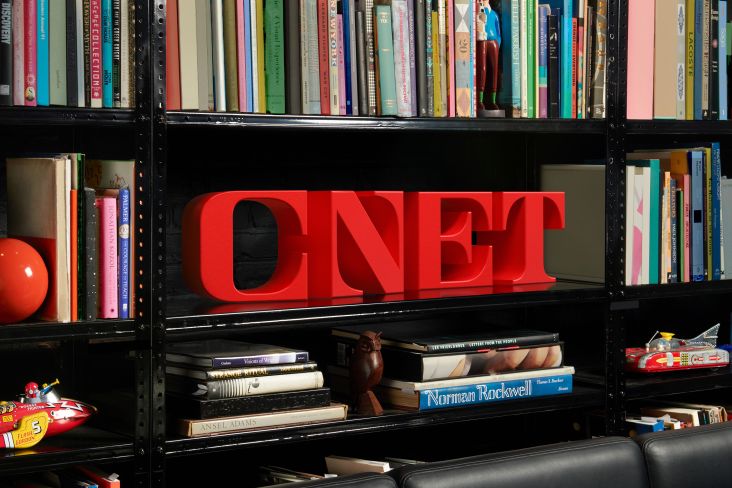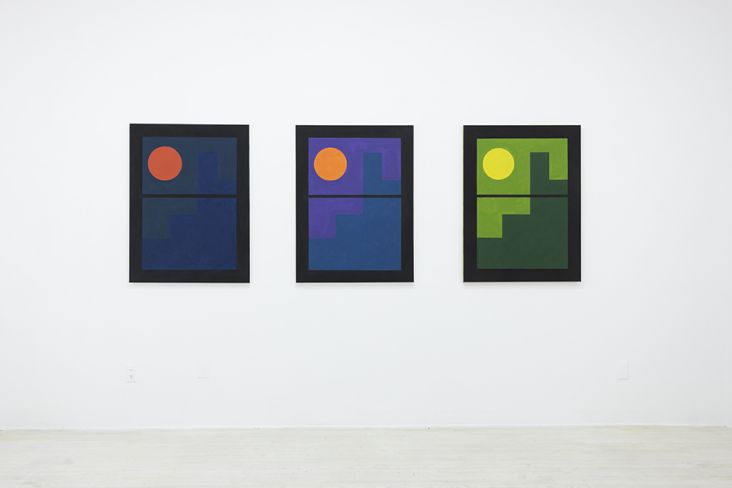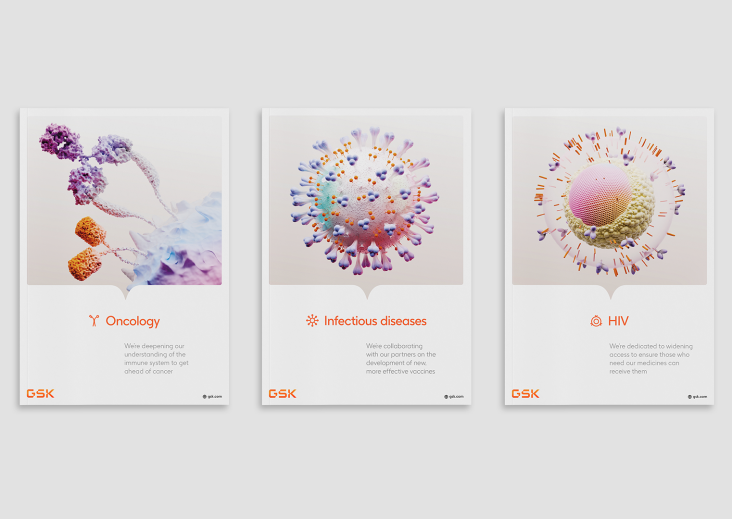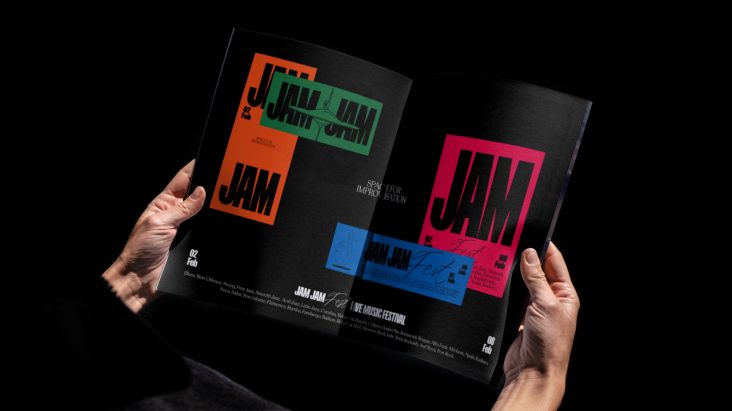James Hurst on his new role at Google, Big Tech's bad press and why he's hopeful for the future
Dream jobs don't have to be out of reach. British designer James Hurst is living proof. After 17 years in the profession, he landed the role of Google's head of brand design this April, and so far, it's been everything he ever wished for. In our exclusive interview, James walks us through his spectacular career and talks about the challenges facing big tech and what the future has to offer.
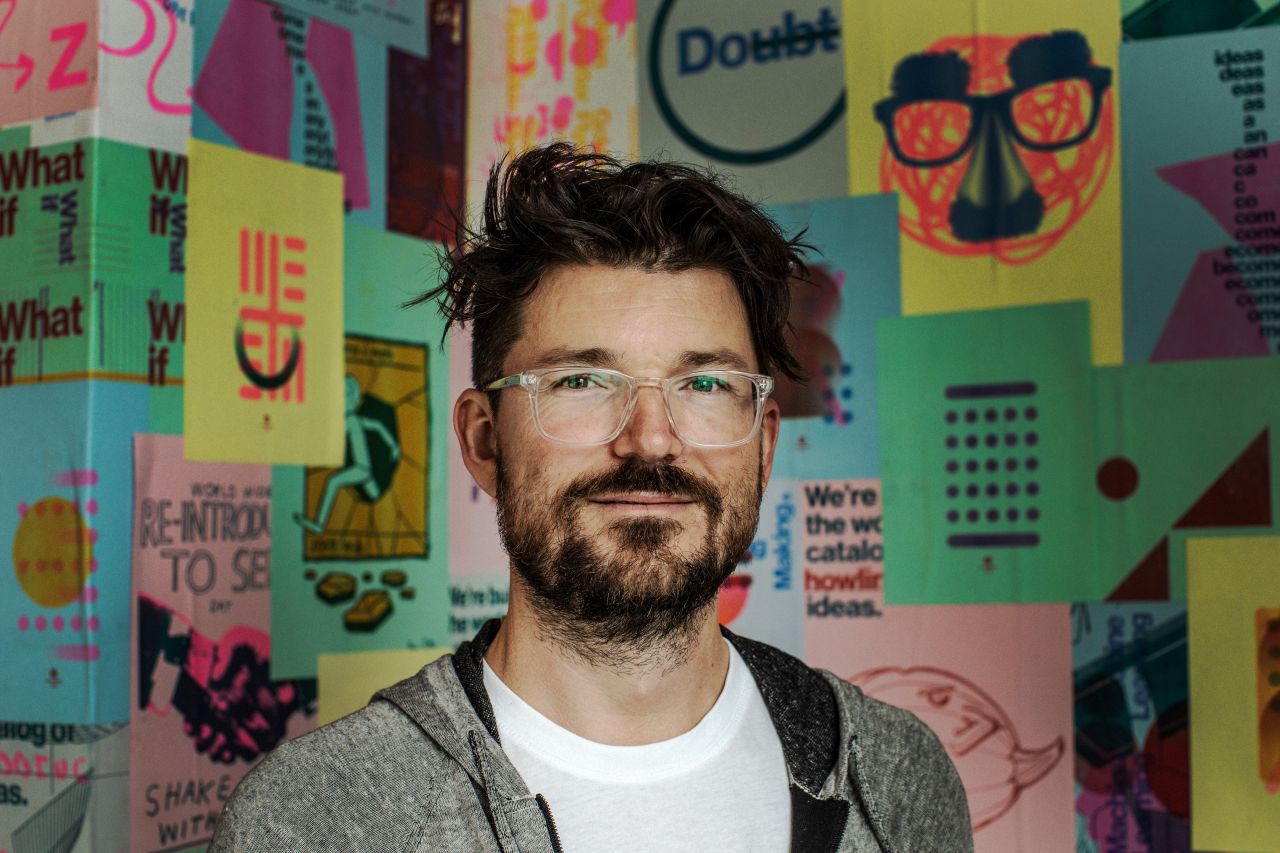
James Hurst, Head of Brand Design at Google
Following graduation from the University of Brighton in graphic design, James got his first creative job in 2005 at Cog Design. Next, he went on to work for Emak Mafu in 2008 when the global recession hit. James left and started his own design studio (Cure Studio), an illustration agency (HigginsonHurst) and a Type Foundry (The Type Foundry). This was followed by senior roles at Figtree, Prophet and Wednesday.
In 2014, he joined DesignStudio, where he spent five years progressing from digital creative director to principal USA. In 2019 came Pinterest, where he worked as the global creative director until this year, landing his current role at Google.
In short, James has worked at some of the highest levels of the design world, starting from the ground up and getting hands-on with client projects along the way. So if ever you wanted insight about where the world of agencies and tech is heading, he's a good person to talk to.
Chatting to James from an office that overlooks the Golden Gate Bridge in San Francisco, we discussed his journey so far, what he thinks of Big Tech's current bad press, and what he hopes to achieve at Google.
Where did you grow up?
I was born in Switzerland and grew up there until I was eight, when we moved to Bishop's Waltham in the UK. The hilarious thing is that I think it was maybe the first moment I realised what design was. I went to a very small kindergarten with about 30 kids in Switzerland. Back in the '80s, Swiss kids used to wear cowhide leather satchels. I went from that to a school just outside Southampton and Portsmouth with about 2,000 kids with my little cowhide leather bag. When you're an eight-year-old, you quickly look around and spot that sort of difference!
I remember having weird conversations with my mum because Switzerland is broken up into cantons like English counties, but each canton has its unique look and feel (look up the country's history, and you'll see why!). It makes everything feel unique to that canton. In the UK, I was always enamoured that all signs look the same! I couldn't get over it. I asked my mum what was going on. Because that stop sign looks like that stop sign, when we went to see my gran miles away, they still looked the same! That's when I started to notice design.
Did you feel like an outsider in the UK? Was the move a pivotal moment for you?
It informed me a lot. I used to speak Swiss-German fluently and English as a second language. My mum and dad spoke English to me at home, but I spoke Swiss-German all day, every day. When we first moved here, I remember having to sit down and say, "be less Swiss", and decide what to do to fit in.
I think every kid has their formative moment. I don't think you need to move from Switzerland to England to have that sort of thing happen to you (and as an ex-pat living in the USA, I'm curious about how my kids would react if we moved back to the UK!).
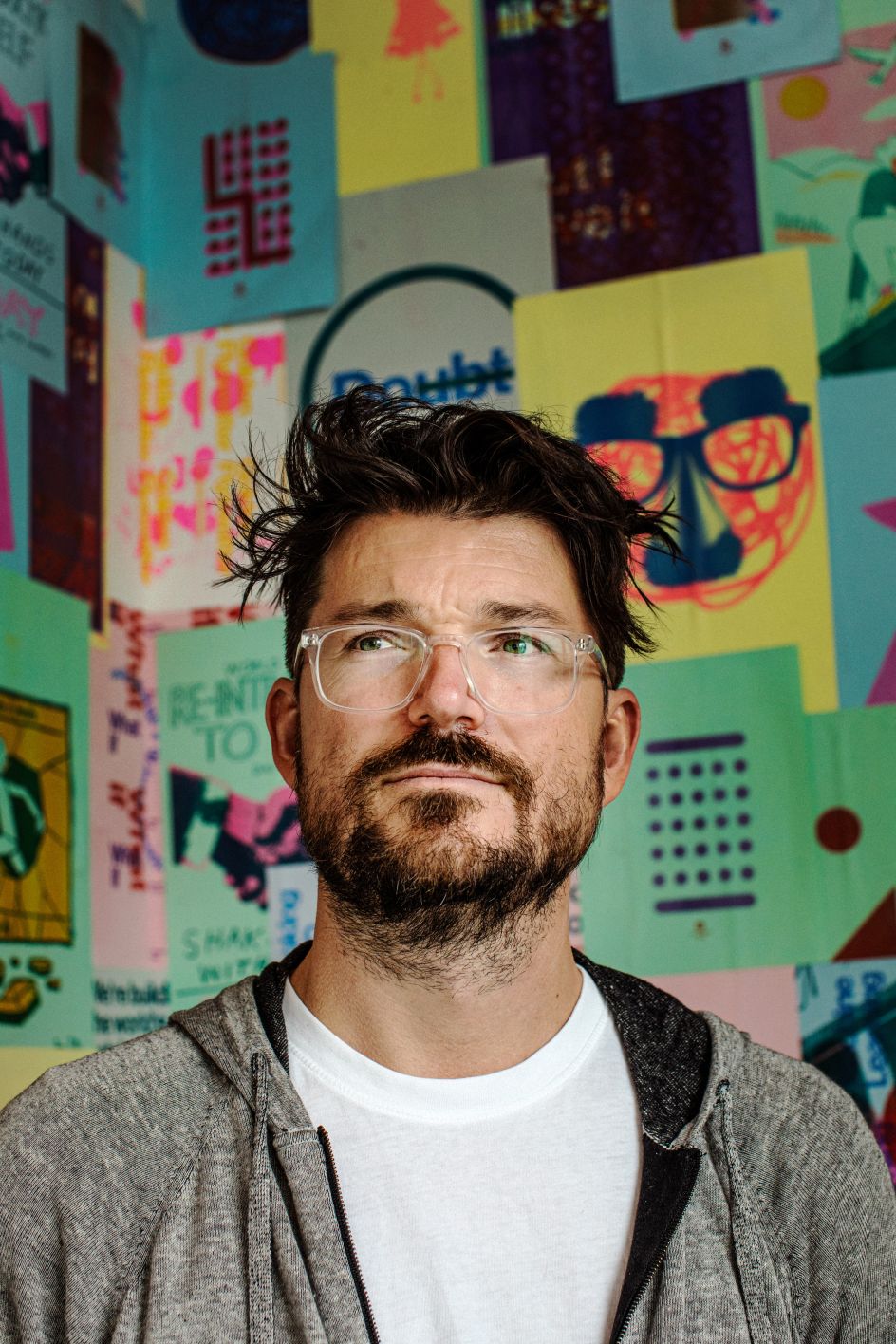
James Hurst, Head of Brand Design at Google
After graduating from university, your first job was at Cog Design, a hugely respectable agency.
I left Brighton in the post-cool-Britannia era. The country was alive with the Spice Girls and gossiping about what Oasis did in 10 Downing Street. My mum and dad were disappointed I'd gone to art school. They were adamant I'd made a terrible decision. They just didn't see that there would be a future for me after art school.
When I finished art school, I moved back in with my parents and applied for endless internships. After about a year, my parents held it over me that I should definitely not have gone to art school.
But all was not lost. My portfolio was an A1 printed folder, mainly screen printed. There were weird posters for mythical things that didn't exist. It had been a lot of work, and I was really, really proud of it. I kept carrying it around to loads of different agencies, and most would take one look at this sort of scruffy, crazy human being and say, "No, actually, we don't need this in our building".
Then I met Michael Smith, the founder of Cog Design. And in that haze of cool Brittania optimism, even though that portfolio was terrible, Michael saw it was full of hope, ambition and a desire to learn and spread my wings. He took a chance on me and became my boss and a great mentor. We're still really good friends, and he's someone I often turn to for advice.
I learnt so much at that agency about understanding the questions you need to ask to get to something that's going to make sense. And they did wild stuff. The first project I worked on was Sultan's Elephant, where this huge, big, mechanical elephant walked through London. It was a crazy time and a fantastic agency.
What happened next? Did you go to Emak Mafu?
A friend of mine called Chester Chipperfield had set up a digital agency. And he needed some help. They were just kicking off redesigning Anthony Gormley's website. And so I joined to help.
When I look back at those days, I wonder how we accomplished anything, as it was fresh and wild. Today, you've got design roles for most deductive tasks. But back then, we made it up as we went along. At Emak Mafu, we had to learn how to run a company, create a culture for a team of people, and build trusting partnerships with big brands as they took their first tentative step on 'the internet'. We had to invent the playbook. Creative thinking wasn't just: does this thing we've designed look nice? It was about the entire process of getting a business online and thinking inductively.
Then sadly, 2008 happened. And like many businesses, Emak Mafu hit tough times. So I set up a small little studio for a few years, which was an adventure.
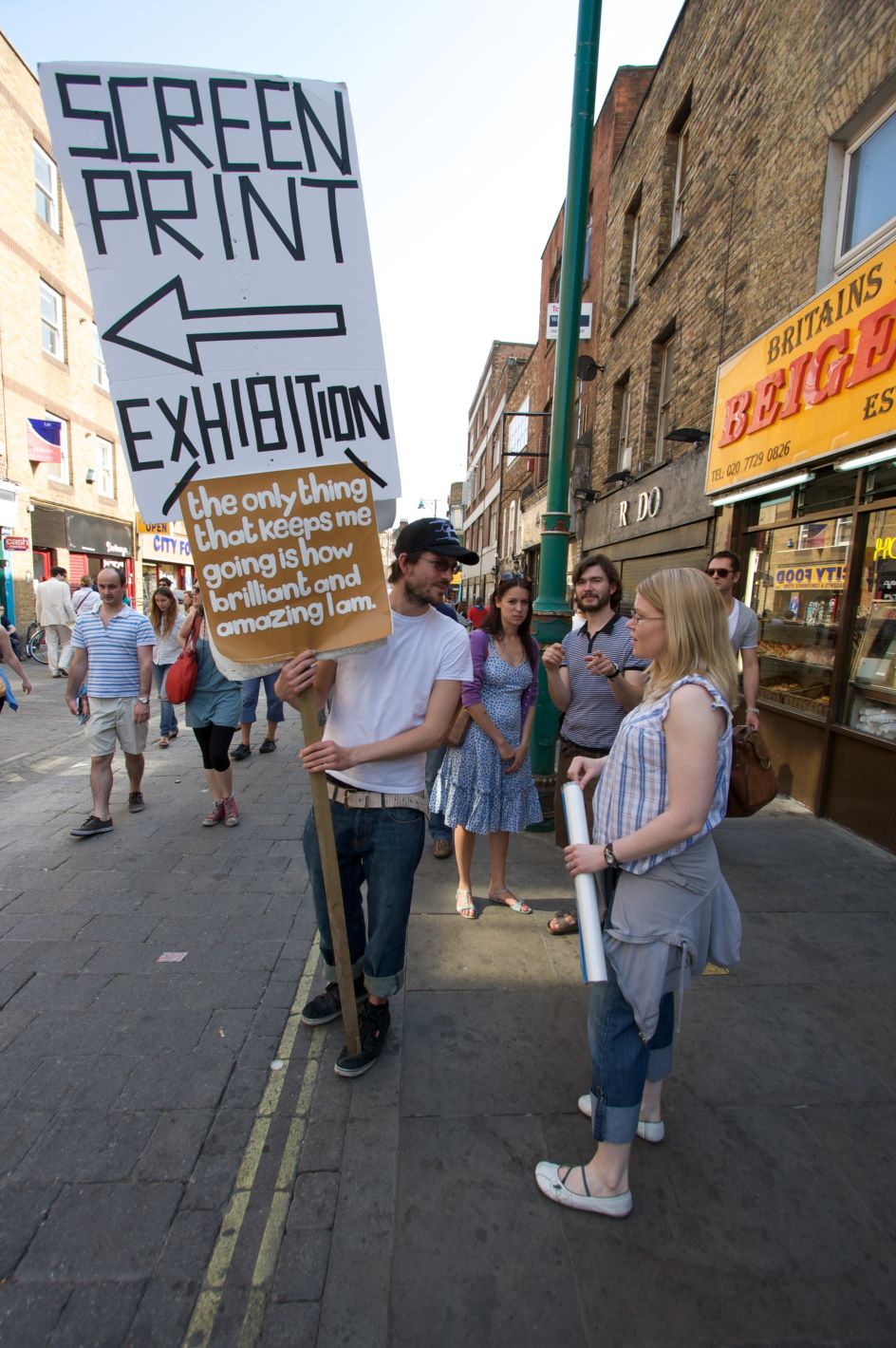
Cure days with Fred Higginson from Print Club London, 'Editions'.
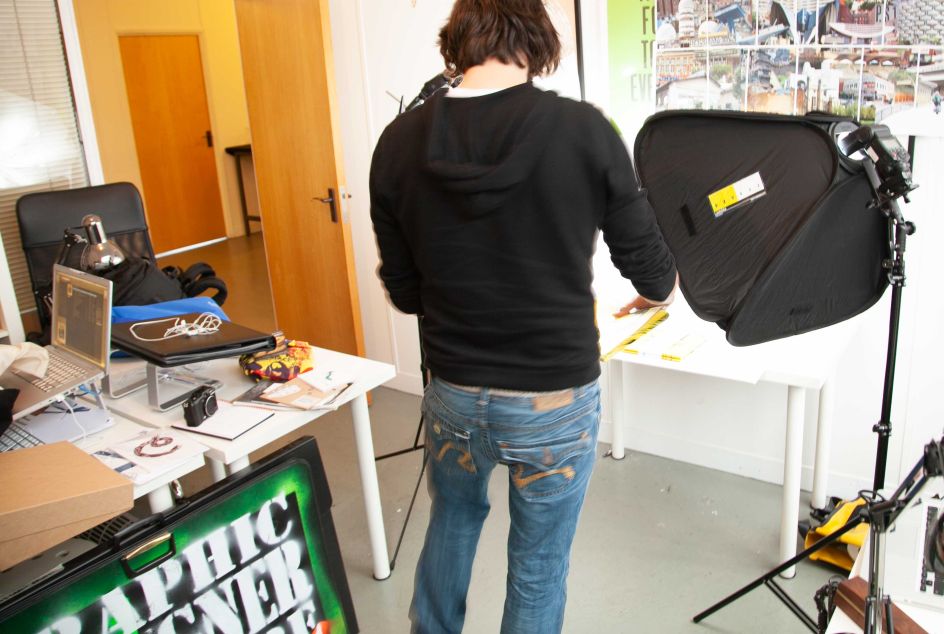
"The humble studio we ran," James on Cure Studio, HigginsonHurst & The Type Foundry
I later met Nick Couch, the MD of a company called Figtree. He's an incredibly awesome brand thinker, brand designer, brand strategist, and creative super brain. I remember our first conversation. I went in hard about what we did at my studio, saying how we're doing all this great brand stuff. And he was kind enough to say: "I don't think you are, but I think I can see that you want to do that. And now you should come and join us".
And so that was the next fun adventure. Working out what the role of digital thinking meant for brand building. They'd just delivered the HTC rebrand, and everything flew a million miles an hour. I've always had impostor syndrome. But that was a real moment of walking into many rooms with some incredible strategists and incredible brand thinkers and seeing them unpick problems and reframe problems in such fascinating ways. And I'm pleased that so many of them are still fantastic friends.
You went on to Prophet and Wednesday and eventually landed at DesignStudio in San Francisco. Was that when you first found yourself across the pond?
Yeah, so I joined DesignStudio in London just after the agency launched the Airbnb rebrand. It was a rocket ship. Anybody starting a business wanted to talk to the agency about their brand. After about a year of me being there, they set up an office in San Francisco, just down the road from where Airbnb's offices are based. But as everyone was so fraught and busy all the time, we never really built one studio culture. So it was my job to try and transplant some of the DNA we had in London to the West Coast arm. James Gilmore did the same for the team in Australia. That's when I left the UK.
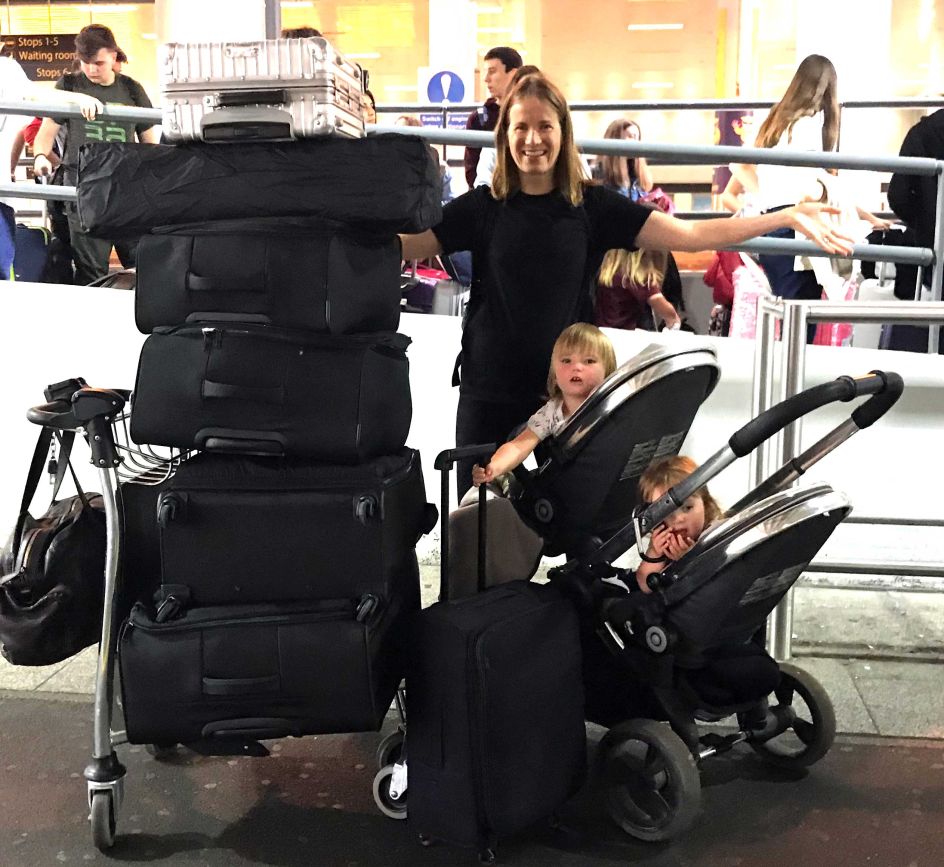
Moving from the UK to the US with "everything we had". James' wife sophie and 18-month-old twins
](https://www.creativeboom.com/upload/articles/94/945f83b62e752d7e5837e31169e8e70aaa40eb0a_944.jpg)
DesignStudio in San Francisco. Photography by Paul Barbera
](https://www.creativeboom.com/upload/articles/48/483a7fbf6881f857e9288f156dd960995face1f5_944.jpg)
DesignStudio in San Francisco. Photography by Paul Barbera
And did it work? Did you have some success?
Definitely. The studio is going from strength to strength. It has a really good ethos about how it makes good work happen. Our job as designers is to ask dumb questions, and that is the DesignStudio philosophy. To ensure that everyone understands that if you're working there, your job is to help other businesses be as good as they can be. And that means asking ridiculous questions and going on amazing adventures with clients. In that process, you uncover what is radically different for each business.
Pinterest was your next role. Was it your first in-house position?
Yeah, I'd always worked agency-side where clients would come in for help, almost like sitting in a therapist's chair, and we'd guide them towards their goals. In contrast, I learned that going in-house is a little like going into the head of the patient. You don't play the leading role; you bring people together who might have different ideas of how things should run and inspire them to move forward together.
I suppose there are politics to deal with, plus a slower pace. Was it frustrating compared to the fast pace of agencies?
It's an entirely different pace. It's like throwing snowballs at the top of a mountain. You can throw a lot of snowballs, and then nothing happens. But then one of them just starts rolling, and you're like, "Oh, my God, what have I started?!" If the chess pieces align, the stars align, or whatever, and you can seed an idea, that idea can change the entire business.
I'm proud of the work that we did at Pinterest. We introduced an entirely new audience (creators) and gave the company a ton of confidence in how it would use that to talk to different people that it hopes will use the platform. There are some really big challenges I don't think you'd ever get near if you weren't working inside the business.
So, yes. The pace can be slow at first. But then you realise that your legs are sprinting, and you wonder who set us off in this direction.
From Pinterest, you are now head of brand design at Google. Does it feel like you've reached the top of the ladder?
It's a fantastic opportunity. This company is huge. The number of products is eye-watering, and the number of different ways people use the products is mind-blowing. The role of the brand is hugely different for different people in really meaningful ways.
It's only week five of me being here, but there are some incredible brand thinkers, brand dreamers, and brand doers. People are working out the role of this thing as a brand? And how do we think about that? Sometimes really speculatively, what do we need to take away from the world? Or sometimes really additively? So what will we throw into the world to make sense of it? And then how do we take that thinking and socialise it in many different places around the business?
I'll probably be finding my feet for years. It's been one of the most humbling onboarding experiences, where every single day, I've been keen and eager to show that I can add value in all of these various ways. I spin up these presentations for things, and then I send them off, and people are like, "Oh, we have an entire team doing that".
I'm in the honeymoon phase. I think everything about Google is amazing. I think the thing that makes me excited is that I'm going to learn a ton about what the role of a brand is from the inside of Google. For a business as interesting as this, it's a dream. With the different ways people think about Google alongside the company's enormous ambition, I've never experienced anything like it before.
Something we offer is help. We make people's lives better. I think if we can show that we're genuinely helping people, then I think that's the area where we prove ourselves. We've got to hold ourselves accountable. And we have to make sure that we live by that value.
It must be a relief that Google doesn't have the same reputation issues as Meta?
Well, Google is a family of well-established products that people rely on every day with some inspirational moonshots that will define our future. It's huge and adds so much value. So the interesting part of the puzzle is that there are many ways people interact with Google, but where and what is the brand? It's also a hyper-competitive market. We have to stay humble and nimble.
The key for me is to listen. I care about what people who don't work at Google are saying about Google while defining what we hope they'll say. My job is to help close that gap.
Is one brand challenge to build trust?
I think trust is a key attribute every brand has to earn. Thankfully, we're already well respected and well regarded. That's because Google is a responsible company in how it builds products and how it develops services. It's an engineering-led company that has succeeded by responsibly building tech that people rely on. Like every brand, we have to continue to work hard to protect and nurture the trust our community has put in us.
In today's world, we should expect much more from the brands we adore. We need to ensure we make people's lives better. I think if we can show that we're genuinely helping people, then I think that's the area where we continue to build a meaningful brand.
](https://www.creativeboom.com/upload/articles/ad/adee0a95372029b99ffbd65ade7992ae81b0964d_944.jpg)
DesignStudio in San Francisco. Photography by Paul Barbera
](https://www.creativeboom.com/upload/articles/c1/c1e65655504096ff69fb7085b96eabf6cb5c59e7_944.jpg)
DesignStudio in San Francisco. Photography by Paul Barbera
](https://www.creativeboom.com/upload/articles/18/18380368f3cb59e41955b61d2764d10085eb328a_944.jpg)
DesignStudio in San Francisco. Photography by Paul Barbera
What are you hoping to bring to this role?
I'm a tech evangelist. My ambition is to ensure we keep building the friendlier, happier, optimistic company that helps people. I was just reading about the dreamers in Afghanistan, this group of inspiring teenage girls who rebuilt a bunch of car parts and motors to make defibrillators during Covid-19. They did it all through finding the right information online, working out how to model things, build things, and have created this extremely efficient bit of medical kit, which people are celebrating. I think that's when tech is at its absolute best.
Tech has endured a tough ride in recent years, though?
Agreed. It's got a bad name for itself, which is infuriating as it's helping us manage one of the most extraordinary events of our time — Covid. It could be in how tech is helping scientists understand what the virus is or the inspiring ways we're using tech to deliver care to people who live in places that have historically not been able to access it.
I'm so inspired by teams like Sehat Kahani, who are getting healthcare into the hands of people who haven't ever had that opportunity before.
Or tools like System, whose belief that "seeing the whole system will help us make better decisions" continues the spirit of thinking that advanced the human race. Particularly when Nasa shared Blue Marble which kicked off an era of philosophical and sociological advances as a result of our species getting to see – as Buckminster Fuller would call it – 'Spaceship Earth'.
The thing that I would love to do is get back to a place where we see the positives in tech. And we start to see the positive impact that it's having.
I'm a board advisor to the team at Hoo Koo E Koo, who (amongst many other things) runs the Future Horizon event. For anyone cynical about the positive impact of tech. Please attend their next event. It is brimming with hope and making meaningful change.
We've got problems to solve. The optimist in me believes that we are moving into a world where people are aware of what those problems are and can get the tools to solve those problems.
I'm already seeing it happen. So much investment is being pumped into businesses doing good, and Google is an inspiring corporate citizen in how it stewards and supports these initiatives.
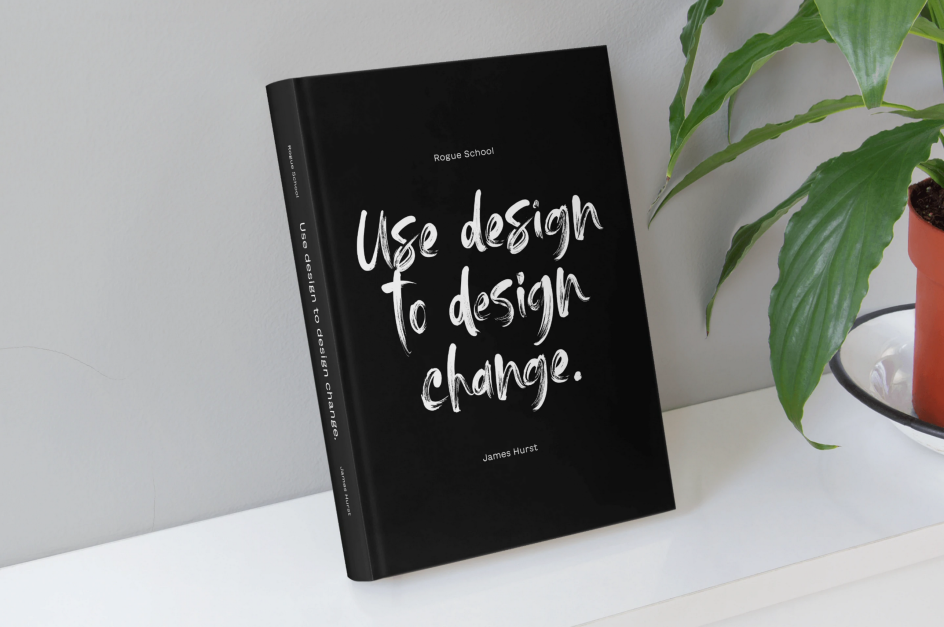
Use Design to Design Change by James Hurst
So you're saying big tech isn't as evil as some claim?
I think a heavy dose of cynicism is healthy. It helps ensure that you look at what companies are doing while asking — is that right? Is that good for the world?
I wrote a book last year, Use Design to Design Change. It's built from my experience branding countless companies and considers how businesses can make a positive impact. The book's premise is to use the triple bottom line used to audit a business: taking people, planet, and profit as levers to consciously define what decisions to make when building a brand. It's a set of tools designed to be used by anyone.
It's wonderful to see the evolution of design during your career and how more brands are doing good.
Yes, this feels like the start of a new epoch in this industry. More and more founders, CEOs and leaders that I talk with are looking hard at the many problems they can positively impact. My humble book is part of a huge wave of great thinking about how creative people can use design thinking to nurture and amplify that impact, but I'm not the first, and I'm thrilled I'm not alone!




 by Tüpokompanii](https://www.creativeboom.com/upload/articles/58/58684538770fb5b428dc1882f7a732f153500153_732.jpg)


 using <a href="https://www.ohnotype.co/fonts/obviously" target="_blank">Obviously</a> by Oh No Type Co., Art Director, Brand & Creative—Spotify](https://www.creativeboom.com/upload/articles/6e/6ed31eddc26fa563f213fc76d6993dab9231ffe4_732.jpg)








